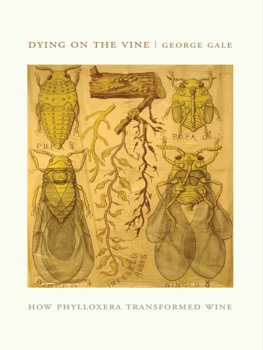TABLE OF CONTENTS
Guide
Novels for Students, Volume 4
Since this page cannot legibly accommodate all copyright notices, the acknowledgments constitute an extension of the copyright notice.
While every effort has been made to secure permission to reprint material and to ensure the reliability of the information presented in this publication, Gale Research neither guarantees the accuracy of the data contained herein nor assumes any responsibility for errors, omissions, or discrepancies. Gale accepts no payment for listing; and inclusion in the publication of any organization, agency, institution, publication, service, or individual does not imply endorsement of the editors or publisher. Errors brought to the attention of the publisher and verified to the satisfaction of the publisher will be corrected in future editions.
This publication is a creative work fully protected by all applicable copyright laws, as well as by misappropriation, trade secret, unfair competition, and other applicable laws. The authors and editors of this work have added value to the underlying factual material herein through one or more of the following: unique and original selection, coordination, expression, arrangement, and classification of the information. All rights to this publication will be vigorously defended.
Copyright 1998
Gale Research
27500 Drake Rd.
Farmington Hills, MI 48331-3535
All rights reserved including the right of reproduction in whole or in part in any form.
ISBN 0-7876-2114-5
ISSN 1094-3552
Printed in the United States of America.
10 9 8 7 6 5 4 3
The Women of Brewster Place
Gloria Naylor
1982
Introduction
The Women of Brewster Place depicts seven courageous black women struggling to survive life's harsh realities. Since the book was first published in 1982, critics have praised Gloria Naylor's characters. They contend that her vivid portrayal of the women, their relationships, and their battles represents the same intense struggle all human beings face in their quest for long, happy lives. For example, in a review published in Freedomways, Loyle Hairston says that the characters " throb with vitality amid the shattering of their hopes and dreams." Many commentators have noted the same deft touch with the novel's supporting characters; in fact, Hairston also notes, "Other characters are equally well-drawn."
Most critics consider Naylor one of America's most talented contemporary African-American authors. Her success probably stems from her exploration of the African-American experience, and her desire to " help us celebrate voraciously that which is ours," as she tells Bellinelli in the interview series, In Black and White. She stresses that African Americans must maintain their identity in a world dominated by whites. Hairston, however, believes Naylor sidesteps the real racial issues. In his Freedomways review, he says of The Women of Brewster Place: "Naylor's first effort seems to fall in with most of the fiction being published today, which bypasses provocative social themes to play, instead, in the shallower waters of isolated personal relationships."
Author Biography
The oldest of three girls, Naylor was born in New York City on January 25, 1950. Her family moved several times during her childhood, living at different times in a housing project in upper Bronx, a Harlem apartment building, and in Queens. When Naylor graduated from high school in 1968, she became a minister for the Jehovah's Witnesses. To fund her work as a minister, she lived with her parents and worked as a switchboard operator. In 1974, Naylor moved first to North Carolina and then to Florida to practice full-time ministry, but had to work in fast-food restaurants and as a telephone operator to help support her religious work. She left the Jehovah's Witnesses in 1975 and moved back home; shortly after returning to New York, she suffered a nervous breakdown.
Later that year, Naylor began to study nursing at Medgar Evers College, then transferred to Brooklyn College of CUNY to study English. Two years later, she read Toni Morrison's The Bluest Eye; it was the first time she had read a novel written by a black woman. Dismayed to learn that there were very few books written by black women about black women, she began to believe that her education in northern integrated schools had deprived her of learning about the long tradition of black history and literature. She resolved to write about her heritagethe black woman in America. She completed The Women of Brewster Place in 1981, the same year she received her Bachelor of Arts degree.
Naylor earned a Master of Arts degree in Afro-American Studies from Yale University in 1983. That same year, she received the American Book Award for Best First Novel, served as writer-in-residence at Cummington Community of the Arts, and was a visiting lecturer at George Washington University. Since 1983, Naylor has continued to write, lecture, and receive awards for her writing.
Naylor attributes the success of The Women of Brewster Place as well as her other novels to her ability to infuse her work with personal experience. While Naylor's characters are fictional, they immortalize the spirit of her own grandmother, great aunt, and mother.
Plot Summary
Gloria Naylor's The Women of Brewster Place is made up of seven stories of the women who live on Brewster Place, a dead end street cut off from the city by a wall.
Mattie Michael
Mattie's journey to Brewster Place begins in rural Tennessee, but when she becomes pregnant she leaves town to avoid her father's wrath. For a while she manages to earn just enough money to pay rent on the room she shares with her baby, Basil. One night a rat bites the baby while they are sleeping and Mattie begins to search for a better place to live. Just as she is about to give up, she meets Eva Turner, an old woman who lives with her granddaughter, Ciel. Eva invites Mattie in for dinner and offers her a place to stay. Years later when the old woman dies, Mattie has saved enough money to buy the house. Ciel's parents take her away, but Mattie stays on with Basil. She refuses to see any faults in him, and when he gets in trouble with the law she puts up her house to bail him out of jail. When he jumps bail, she loses the house she had worked thirty years to own, and her long journey from Tennessee finally ends in a small apartment on Brewster Place.
Etta Mae Johnson
Though Etta's journey starts in the same small town as Mattie's, the path she takes to Brewster Place is very different. Discovering early on that America is not yet ready for a bold, confident, intelligent black woman, she learns to survive by attaching herself "to any promising rising black star, and when he burnt out, she found another." She joins Mattie on Brewster Place after leaving the last in a long series of men. Attending church with Mattie, she stares enviously at the "respectable" wives of the deacons and wishes that she had taken a different path. Eyeing the attractive visiting preacher, she wonders if it is not still possible for her to change her lot in life. When Reverend Woods clearly returns her interest, Etta gladly accepts his invitation to go out for coffee, though Mattie expresses her concerns about his intentions. By the end of the evening Etta realizes that Mattie was right, and she walks up Brewster Street with a broken spirit. As she climbs the stairs to the apartment, however, she hears Mattie playing Etta's "loose life" records. With pleasure she realizes that someone is waiting up for her.






















